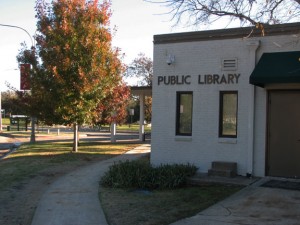In the month of August, I have been blogging on WOW Currents. You can access today’s post “Inquiry into Global Nonfiction and Informational Literature: Student Learning Outcomes and Reflections.” This is the final WOW Currents post for this 4-part series.
Today, library science students and I will launch the second course I will be teaching for the iSchool at the University of Illinois, Urbana-Champaign. This course “School Library Media Center,” which focuses on the instructional partner and information/technology specialist roles of school librarians is in my teaching “sweet spot.” I wrote the course textbook and have been teaching similar courses since 1995…
The course I’ve been writing about and reflecting on this month, “Information Books and Resources for Youth,” was a leap out of my past experience and comfort zone. I was excited to prepare and teach it and it stretched me in “good” ways. These are my takeaways from this teaching/learning experience.
 Explore Pathfinder
Explore Pathfinder
It is my habit to complete every assignment I assign to students. For me, that is the only way to ensure that the assignment directions are clear, the assessment is aligned with the assignment objectives, and to ensure that there is plenty of room for students to engage creatively with the project. For this course, I created an annotated pathfinder to help learners access global information books and resources to explore the question of prejudice and discrimination against children and teens.
I organized the annotated bibliography/pathfinder by genre (in order to reinforce key course vocabulary) and format of nonfiction and information books and resources as well as subtopics within each genre. Curating these resources was and will continue to be a “passion project” for me. I have since read a memoir that I will add to this resource, How Dare the Sun Rise: Memoirs of a War Child by Sandra Ywiringiimana. It is my hope that IS445 graduate students and any educator or student who curates resources that are personally meaningful will make a commitment to continually add to their work and share it for the benefit of others.
Student Learning Products and Feedback
It was encouraging to me that fourteen out of twenty students developed final projects for the course that included global nonfiction and informational books. Please see today’s WOW Currents blog post. Although all students in the course did not embrace the value I hold for global nonfiction and informational books and resources as pathways to understanding, empathy, and compassion, most students found a new or renewed commitment to identifying compelling resources to support student learning. In addition, many embraced inquiry learning as an effective practice for student engagement, meeting curricular demands, providing student choice, and amplifying student voice.
My Reflection
When I analyzed the results of the pre- and post-course surveys, I wondered why I had asked the question about ranking genres. I gave the students a list of eleven genres and asked them to rank them from most powerful to least powerful in terms of offering readers opportunities to develop empathy, compassion, and their understanding of human diversity. Although all IS445 students reported in the post-course survey that they had moved nonfiction and informational books up in their rankings, I fully believe the impact of a text “depends.” It depends on their purpose for reading. It depends on the timing in the reader’s life—their prior experiences and their current questions. It depends on the reader’s background knowledge and connections to the topic and themes raised in the text. It depends on the reader’s familiarity with or preferences for a genre or format, or “need” for visuals, or… It just depends.
That said, similar to the students who moved their rankings up for narrative nonfiction and memoir, I also discovered/rediscovered my enjoyment and value for these genres. In particular, I have not been drawn to memoirs and will now seek out more to read and pay more attention to those that cross my path and screen. These were some students’ final reflections, used with permission.
IS445 student Sara DeGraff, 8th-grade math teacher and future school librarian, wrote this in her final course reflection: “Exposing people to stories about others in similar situations or hazardous situations could create that empathetic feeling. When you have empathy, you can have a want to take action. Reading autobiographies, memoirs, and biographies can help create that empathy. … If we continue sharing people’s stories, we can create global citizens.”
IS445 student Becky Oberhauser wrote this in response to a classmate’s reflection: “I think what we’ve learned in this class will help all of us try to take on a global perspective when building collections for kids or when doing reader’s advisory. I liked that you said that informational text is the key to help students see their common humanity… Fictional texts may prompt emotions, but students may not develop the same passions to help others from them because the stories aren’t real.”
IS445 student and middle school teacher M. Albrecht wrote this: “It was very eye-opening to even consider that non-fiction books could be used for promoting a sense of empathy within students… In the future, I will try and make nonfiction resources just as enticing to the youth in my charge as I do fiction resources, whether it be in the form of guided inquiry design, creative displays, or hooks… If we, as educators and librarians, help cultivate that empathy by providing them with resources to expand their horizons and fostering their sense of inquiry, they will be able to figure out how they as individuals can help any being anywhere in the world.”
Student Choice and Voice
This course involved students in inquiry projects in which they determined the topics for study and in small groups or individually pursued curating nonfiction and informational books and resources to share with youth. I hope students understood that my trust in their ability to chart their own learning (with support) and exercise agency (within the stated course description and objectives) was a model for how they can create guided inquiry opportunities for youth in their care.
“In the context of the age of communication, mass media, and the information revolution, criticism’s ties to discrimination is grounded on a belief that students would be empowered as they develop the capacity to discriminate and critically evaluate all kinds of texts in multiple modalities within the global flow of information” (Choo 2013, 101).
It is my sincere hope that IS445 student felt empowered in our course; I trust they will pass it on.
Work Cited
Choo, Suzanne S. 2013. Reading the World, the Globe, and the Cosmos: Approaches to Teaching Literature for the Twenty-first Century. New York: Peter Lang.
Image Credit
Altmann, Gerd. “Web Networking Earth Continents.” Pixabay.com. https://pixabay.com/illustrations/web-networking-earth-continents-3079789/


